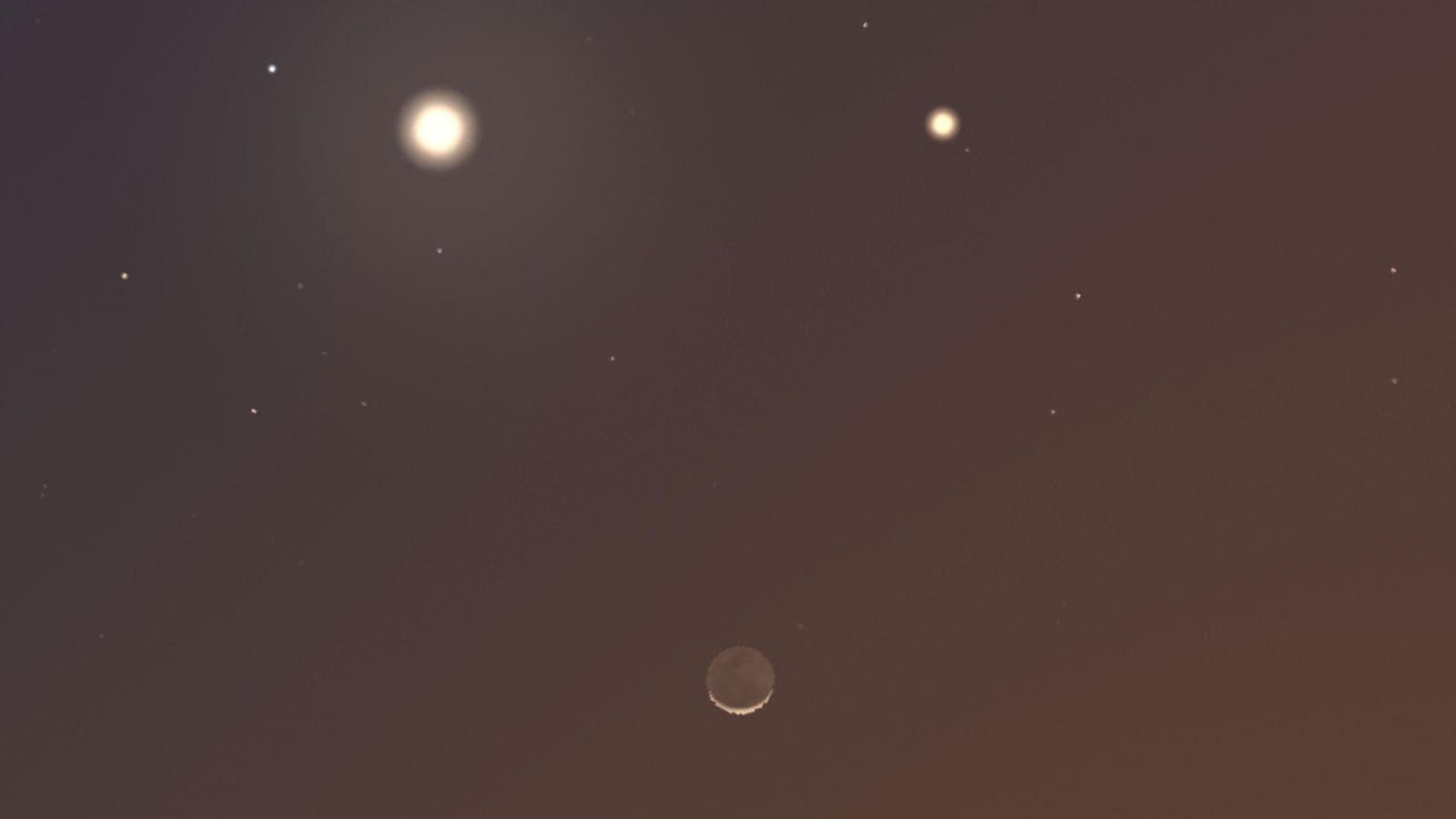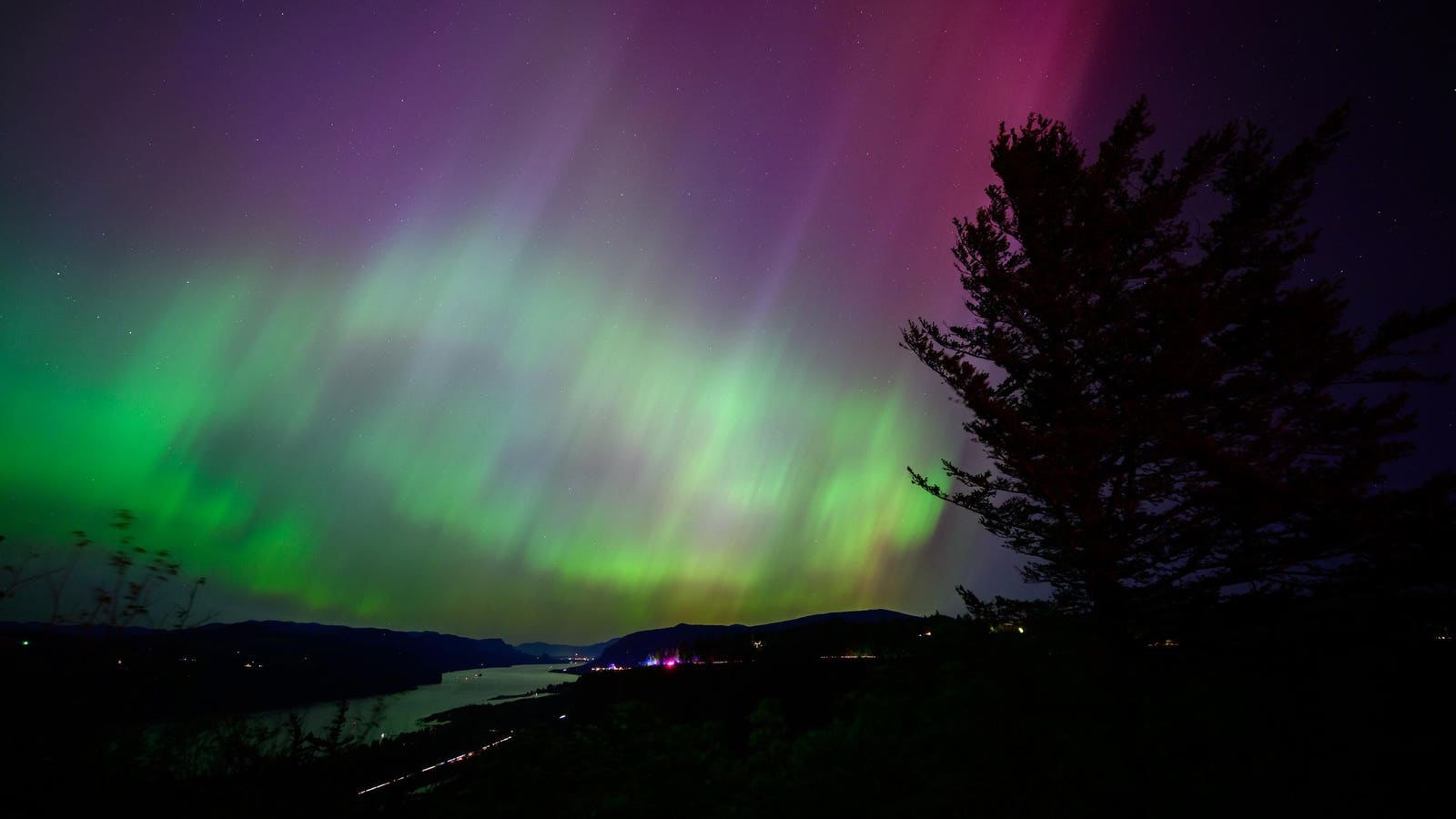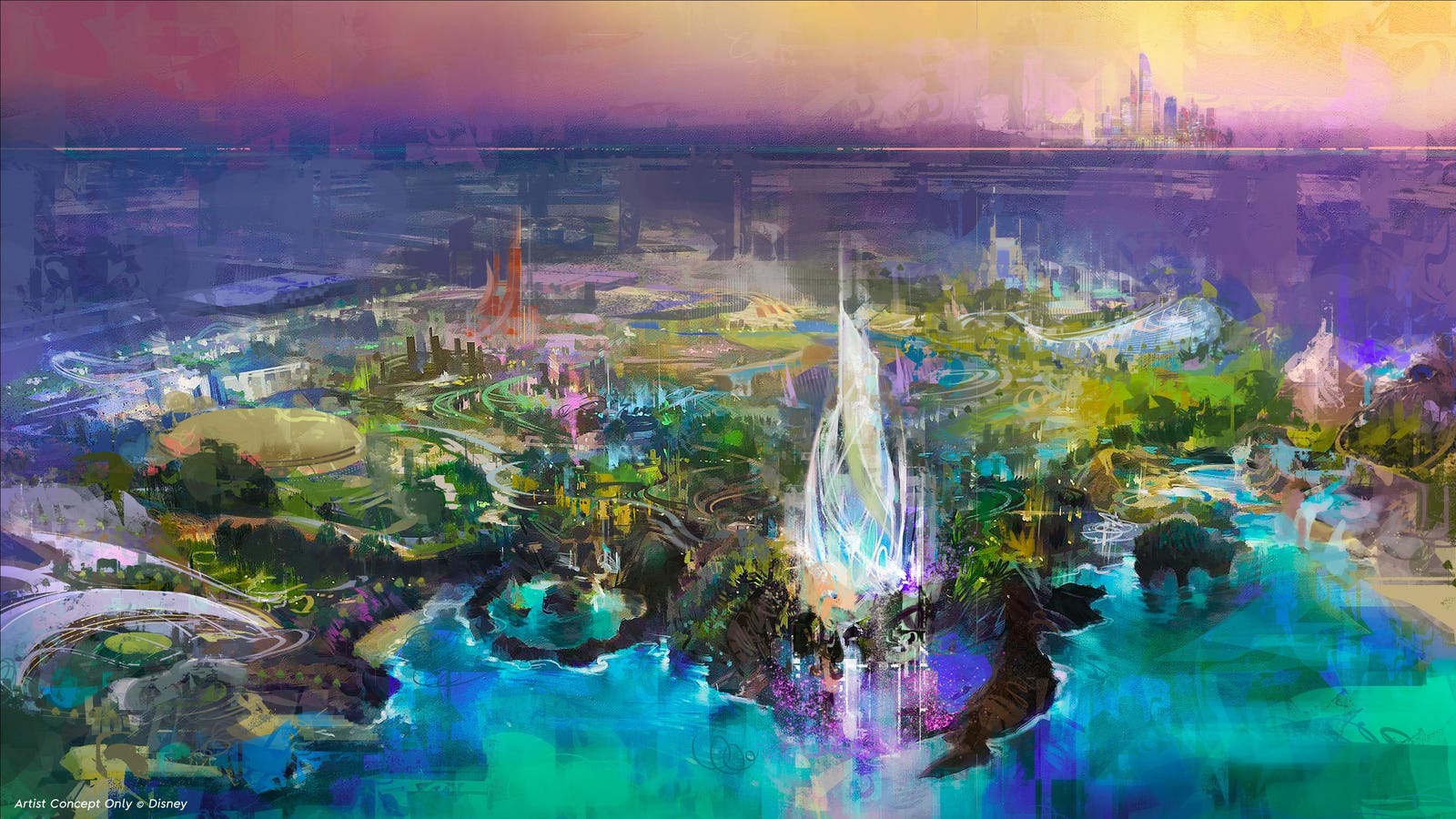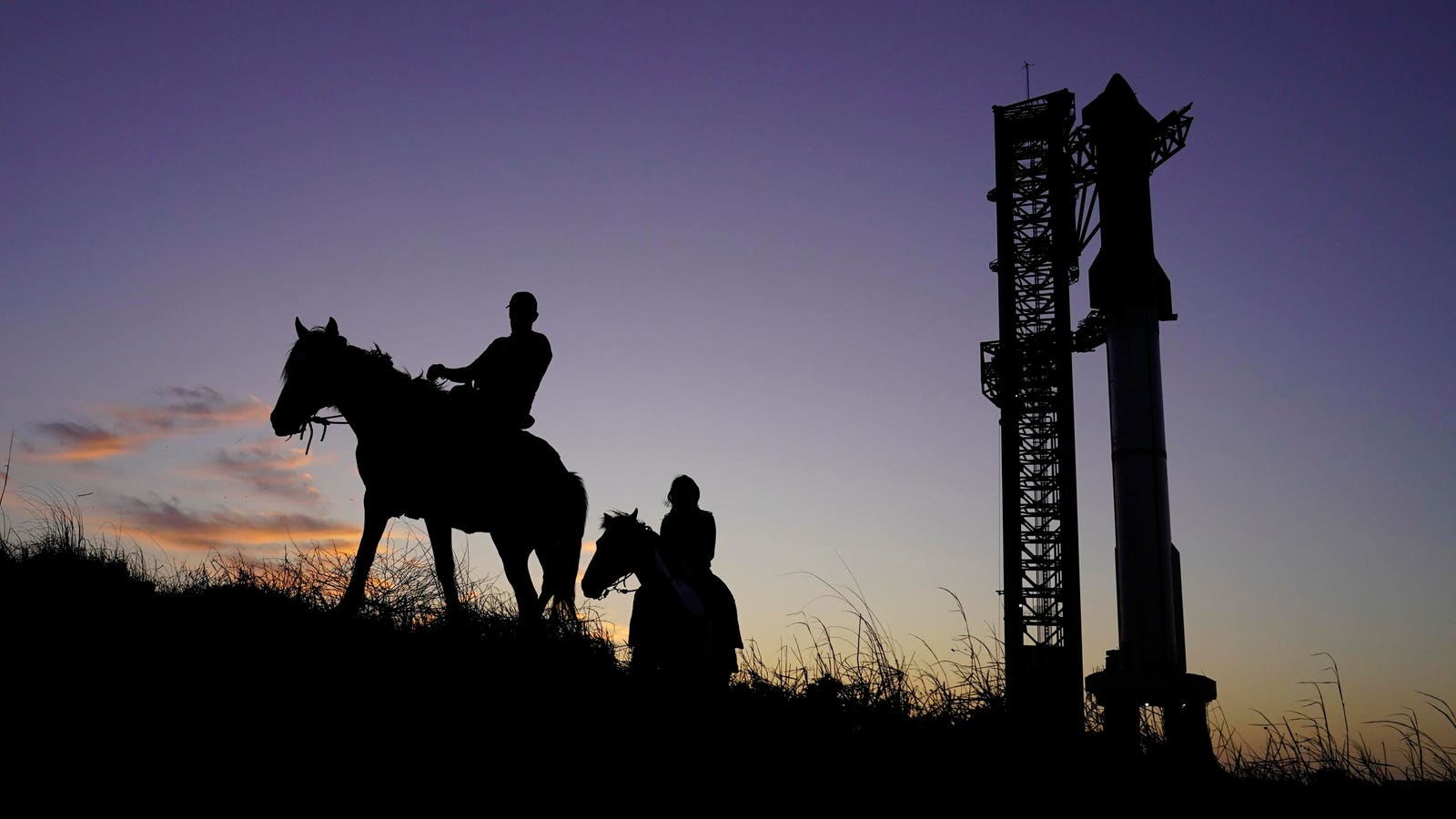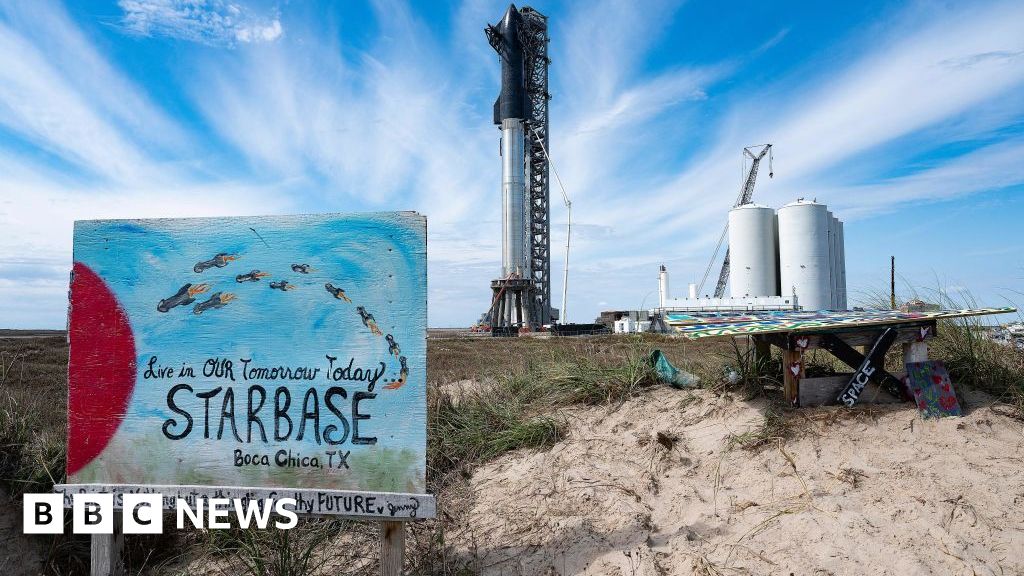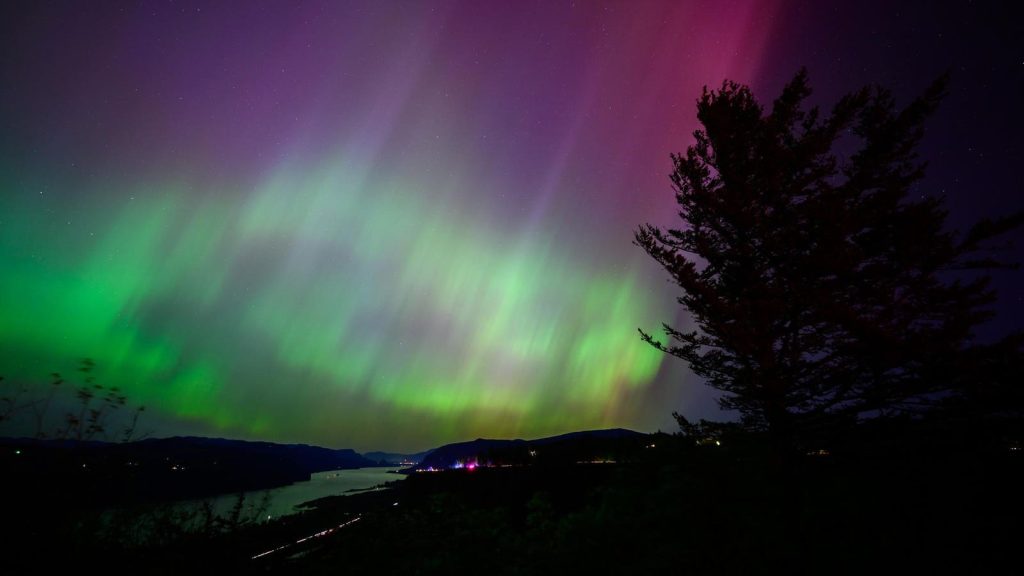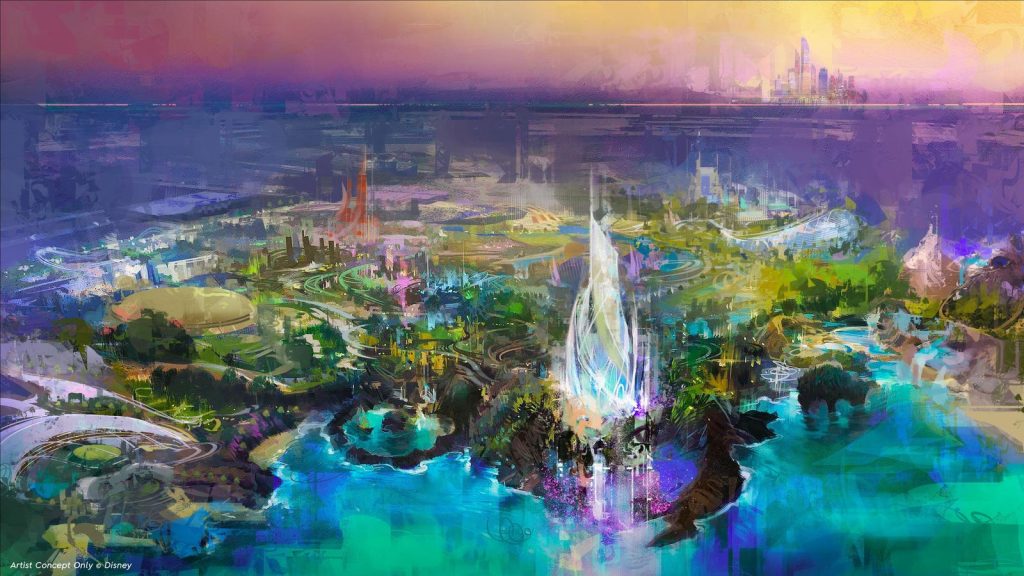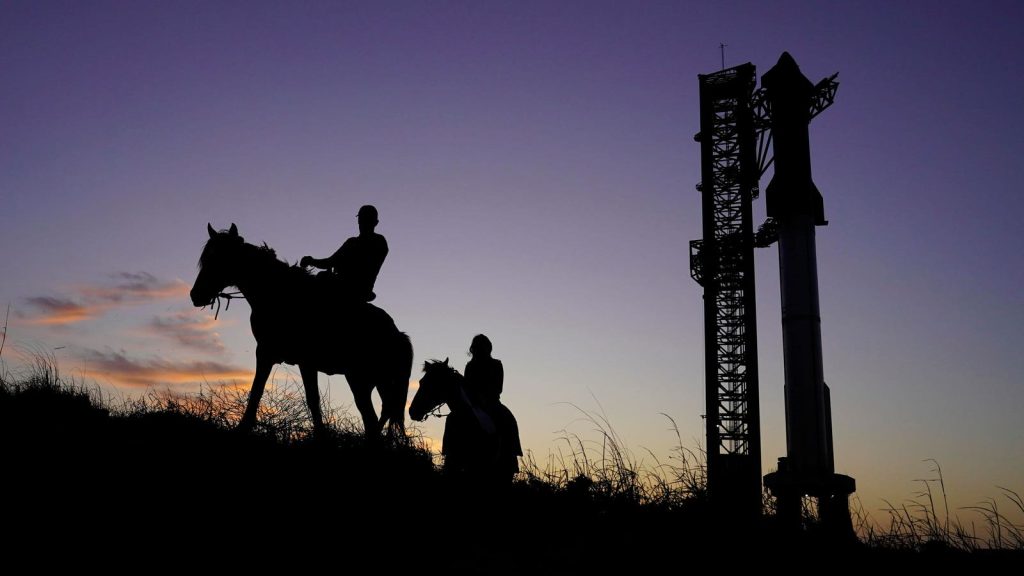Topline
About an hour before sunrise on Friday, April 25, 2025, a “smiley face” will appear in the morning sky as a crescent moon appears close to the brilliantly bright planet Venus and the ringed planet Saturn. However, it won’t be as dramatic as social media would have you believe.
Before sunrise on April 25, 2025, a crescent moon will rise beneath Venus and Saturn to create a … More celestial “smiley face” arrangement.
Key Facts
On the morning of April 25, a crescent moon will rise due east around an hour before sunrise. That’s the time to be looking because the sky will gradually brighten. The exact time to look will be the time of moonrise where you are.
The moon will rise just a few degrees below Venus, with Saturn to the right. The effect will be a rather stretched “smiley face” arrangement on its side. Although both will be obvious to the naked eye, the planets will look vastly different.
Venus, shining at -4.4 magnitude, will be about 150 times brighter than Saturn at 1.2 magnitude. The moon will be just 8%-lit, one of the most beautiful times of the month to look at.
This waning crescent phase is its final before completing its 29-day orbit of Earth on April 28, when it will be roughly between the Earth and the sun — a new moon.
As it clears the horizon, the slender crescent moon will begin to reveal its shadowed side. “Earthshine” — sunlight reflected by our planet’s oceans, ice caps and clouds — can be detected on the moon’s dark face by the naked eye, but it looks even better through binoculars. Earth reflects about 30% of the sunlight that falls upon it.
The sight of the celestial “smiley face” is limited to the pre-dawn hour on April 25. On April 26, the moon will have shrunk to a 4% crescent and won’t be visible in the sky, though the planets will be in a similar position.
What’s Next For Venus And Saturn
Right now, Venus is also a crescent. It’s recently undertaken Earth on its journey around the sun (it orbits in 225 days to Earth’s 365 days). It’s, therefore, very close to Earth — hence its high brightness — but because it’s roughly between Earth and the sun, we only see a portion of its side illuminated. During the “smiley face” conjunction, it will be just 24%-lit, but that’s now increasing each night as it moves away from Earth.
While Venus takes just 25 days to orbit the sun, Saturn’s journey takes 29.4 Earth years. Now, in the constellation Pisces, Earth will place itself between the ringed planet and the sun on September 21, according to In-The-Sky. This is Saturn’s opposition, which will see it shine at its biggest, brightest and best in the night sky.
Key Background
April will also see the first “shooting stars” display of the Northern Hemisphere’s spring. According to the American Meteor Society, the Lyrid meteor shower will peak overnight on April 21-22, with about 18 meteors — likely including some bright fireballs — expected each hour. A few weeks later, on Monday, May 5, about 40-60 “shooting stars” are expected per hour during the peak of the Eta Aquariid meteor shower.
Further Reading
ForbesThe Greatest Eclipse Of Your Life Is Coming Soon — Here’s What To KnowBy Jamie CarterForbesSpaceX Launches Atomic Clocks With Lasers To Test Einstein TheoryBy Jamie Carter
ForbesSee The Spectacular Photos Of Saturday’s Solar EclipseBy Jamie Carter

